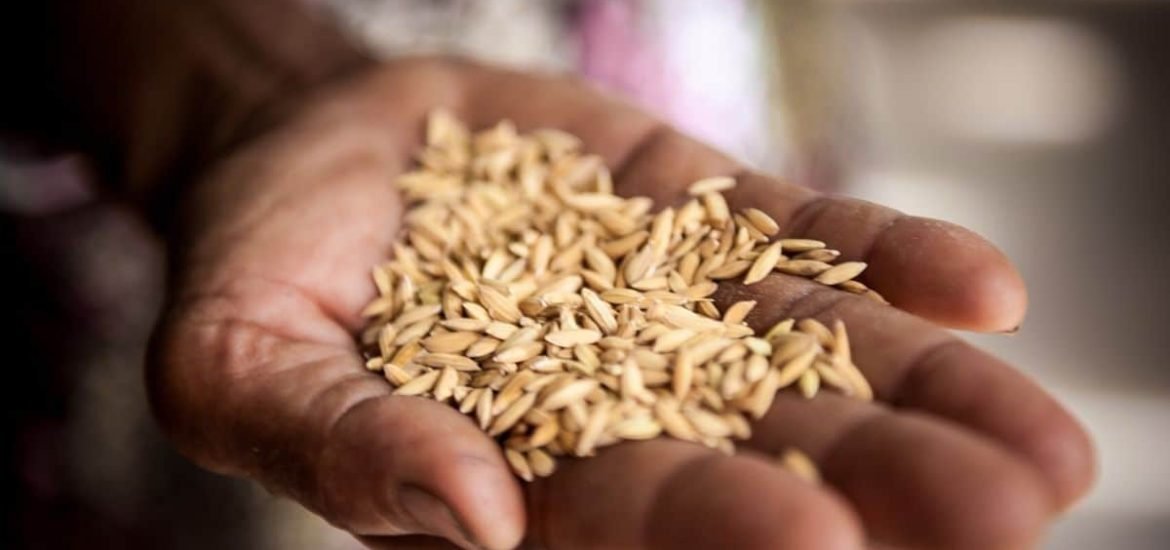
Scientists have developed a new tool for combating malnutrition in developing nations: biocompatible polymer-coated vitamins that can fortify staple grains with essential micronutrients. A new study published on 14 November in Science Translational Medicine showed that the polymer coating can effectively protect vitamins during cooking, then the micronutrients are released in and absorbed by the body (1).
In the developed world, vitamin deficiencies are less common since most people have access to a varied diet and nutrient supplements. But in low-income nations, many people still do not have access to essential nutrients and vitamins. As a result, millions of children worldwide suffer from debilitating — and preventable — diseases and blindness because they lack essential vitamins and nutrients. Nearly 2 million childhood deaths occur each year in low-income countries, where nutritional deficiencies and malnutrition remain a serious concern – and the cause of almost 50 per cent of deaths of children under five, according to the World Health Organization (WHO).
By incorporating micronutrients into common foods, essential vitamins and nutrients could potentially reach millions of people in low-income countries. However, vitamins and other supplements are often highly unstable, which limits not only their shelf life but makes it difficult to add them to foods. Another problem is that nutrients like iron can change the colour and taste of foods making them less palatable.
This can be solved by coating vitamins in a protective material that is then degraded by stomach acids allowing the encapsulated vitamins to be absorbed in the digestive tract. Current vitamin encapsulation methods are based on proteins and sugars, which are quickly broken down during cooking. Unfortunately, heat can damage vitamins so that they cannot be absorbed making it difficult to add much-needed vitamins like zinc, iron, and vitamins A and D to foods.
The researchers from the Massachusetts Institute of Technology (MIT), funded by the Bill and Melinda Gates Foundation, examined 50 kinds of polymer coatings in search of a way to make potentially life-saving vitamins available to people in low-income countries. In the end, they settled on a polymer called BMC, which is a well-known food additive and already approved by the US Food and Drug Administration.
They were able to encapsulate 11 important micronutrients: iron, iodine, zinc, and vitamins A, B2, niacin, biotin, folic acid, B12, C, and D. In addition, they were able to co-encapsulate 4 of these micronutrients at the same time. After confirming the effectiveness of the new system in the lab — BMC stood up to heat, ultraviolet light, and 2 hours in boiling water — the researchers tested the polymer-coated vitamins in mice. They showed that the polymer is effectively broken down in the stomach allowing the released vitamin to be absorbed in the intestine.
Next, they moved on to humans. Clinical trials were performed in collaboration with food fortification expert Prof Michael Zimmermann of ETH Zurich in Switzerland. The findings: people who ate bread made with vitamin-fortified flour absorbed almost the same amount (nearly 90 per cent) of iron as those who ate uncoated or ‘free’ iron.
Scaling up the process
Nutrient deficiencies impair normal growth and development, cause disease, and are responsible for a host of other problems – both cognitive and physical. However, incorporating nutrients into staple foods could be an effective way of preventing malnutrition. The researchers plan to conduct further clinical trials in areas where these essential nutrients are needed by people the most.
(1) Anselmo, A.C. et al. A heat-stable microparticle platform for oral micronutrient delivery. Science Translational Medicine (2019). DOI: 10.1126/scitranslmed.aaw3680